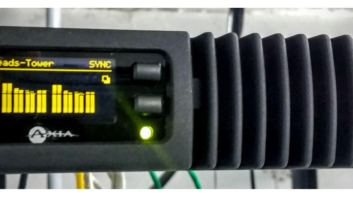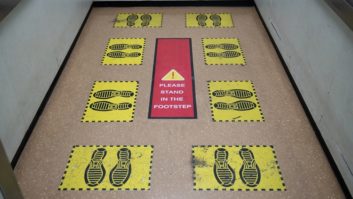 Shane Toven, CSRE CBNT, is senior broadcast engineer at Educational Media Foundation.
Shane Toven, CSRE CBNT, is senior broadcast engineer at Educational Media Foundation.
This article appeared in Radio World’s “Trends in Codecs and STLs for 2020” ebook.
Radio World: What’s the most important trend you see in the design and performance of codecs for remote or STL use for radio broadcast facilities?
Shane Toven: I see a trend toward combining multiple codec channels in a single unit. This helps with consolidation of facilities where multiple content streams and locations are involved. I also see codecs becoming more powerful as newer and more efficient encoding options are available.
The most exciting development that I see is increasing quality with less bandwidth usage. As broadcasters shift toward consolidating more facilities and interconnecting remote talent, this will be an important consideration for balancing quality versus bandwidth cost.
RW: How are today’s technologies solving problems in creative ways, or being deployed in your own facilities?
Toven: Codecs have been an invaluable tool for me, going all the way back to the original POTS codecs. Unfortunately, ISDN was not an option in rural Minnesota where I started my career. I purchased a Comrex Vector at my first station when that technology became available. It made a significant improvement in the quality of remote broadcasts when the options for connectivity in rural areas were limited.
Once IP connectivity started becoming more ubiquitous and there were an increasing number of IP codec options on the market, I took advantage of that to execute some very complex remotes, one of which involved live events at two different venues, and full talkback facilities between the studio and the two venues.
The latest application for codecs at my current facility has been converting multiple channels of audio on the AoIP network at the studio to encoded audio for carrying across lower bandwidth links. This conversion is done entirely inside the codec itself without any actual transition to AES or analog audio. Livewire I/O on one interface, codec I/O on the other interface. It really makes for a very nicely integrated solution.
[Check Out More of Radio World’s Ebooks Here]
RW: What role are codecs playing in this new world of at-home broadcasting?
Toven: Codecs have been critical in this role, though not in the traditional hardware sense. Some broadcasters have chosen to deploy hardware codecs for this purpose, but many others are using services such as CleanFeed or ipDTL. Both have advantages and drawbacks, but the biggest advantage of a software-based solution is ease of use and reduction in hardware costs. I could also envision a scenario where the codecs themselves become an integrated software component of a virtual infrastructure. Your smartphone becomes your codec and the talent can work from anywhere with very little hardware.
RW: How have AoIP technology developments been reflected in the look and function of codecs?
Toven: AoIP has made implementing multichannel codecs much simpler. Instead of a rack full of AES or even analog audio wiring, the codec has no traditional audio I/O at all. One such product that we currently use is the Telos iPort. This streamlines the installation and implementation of codecs in our AoIP based facility considerably. The codec has very few physical controls and metering on it. Instead you have a 1RU box that can handle eight or more channels of encoding and decoding with all monitoring and control performed via the network.
RW: What will the codec of the future look like, if we use one at all?
Toven: As connectivity continues to improve, we may in fact not require codecs anymore. I can envision a time where we are able to pass multiple channels of uncompressed AoIP between facilities directly. This would further simplify installations by eliminating one more step in the chain and improve audio quality by reducing the number of cascading codecs, a problem that has plagued engineers since the early days of bit-reduced encoding. I think what will become more important rather than codecs in this scenario is precision timing sources synchronized to GPS.







